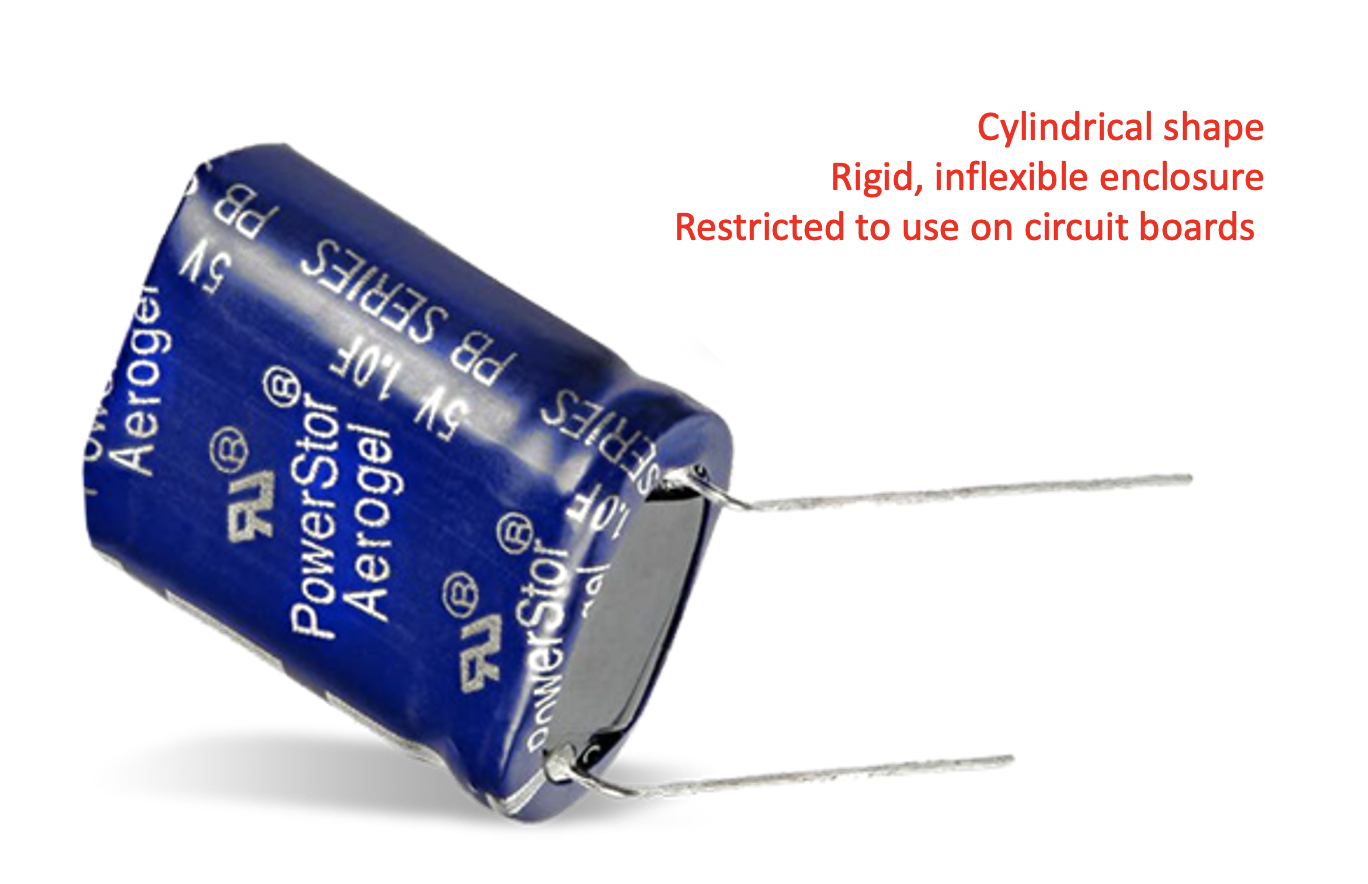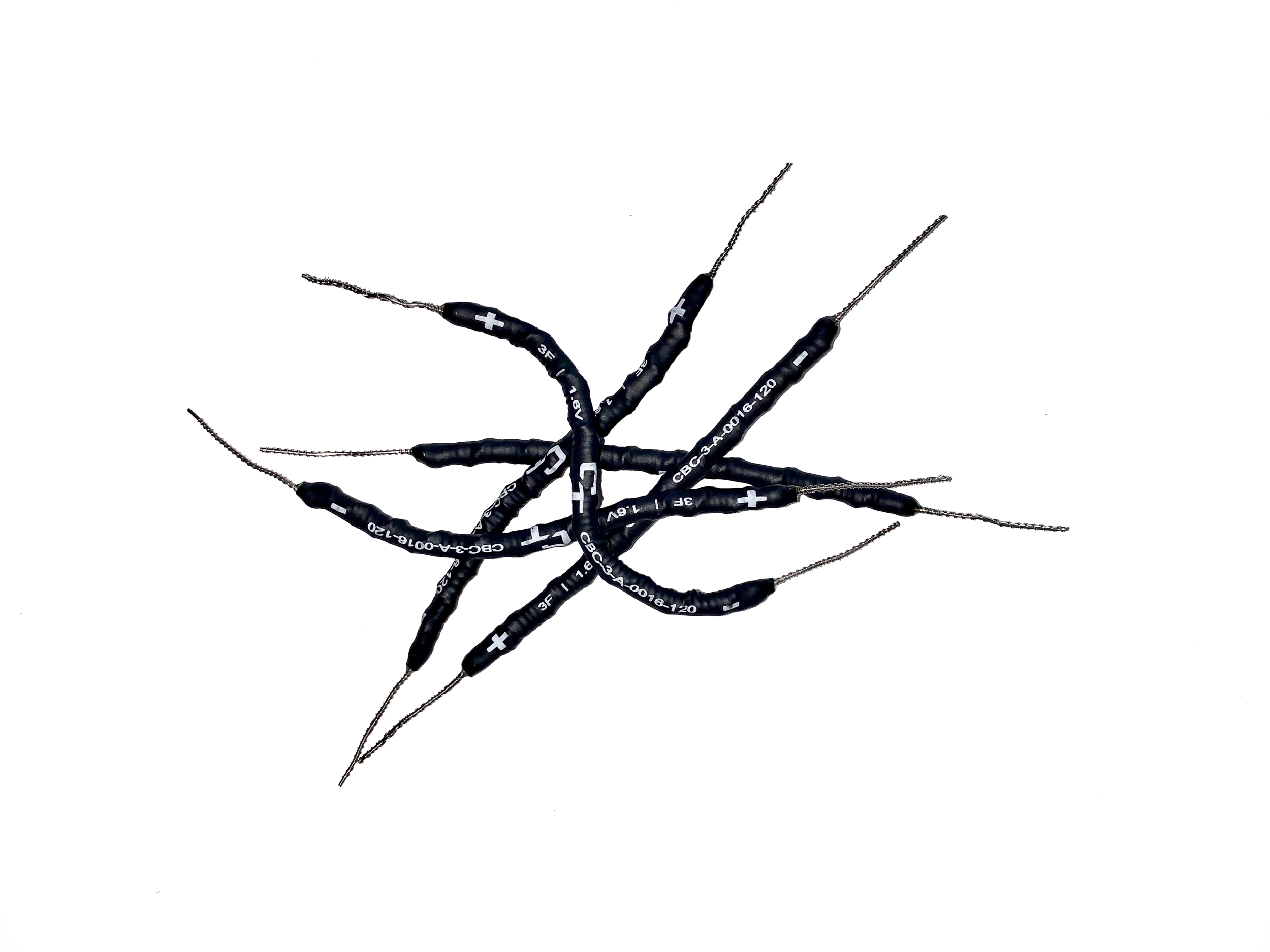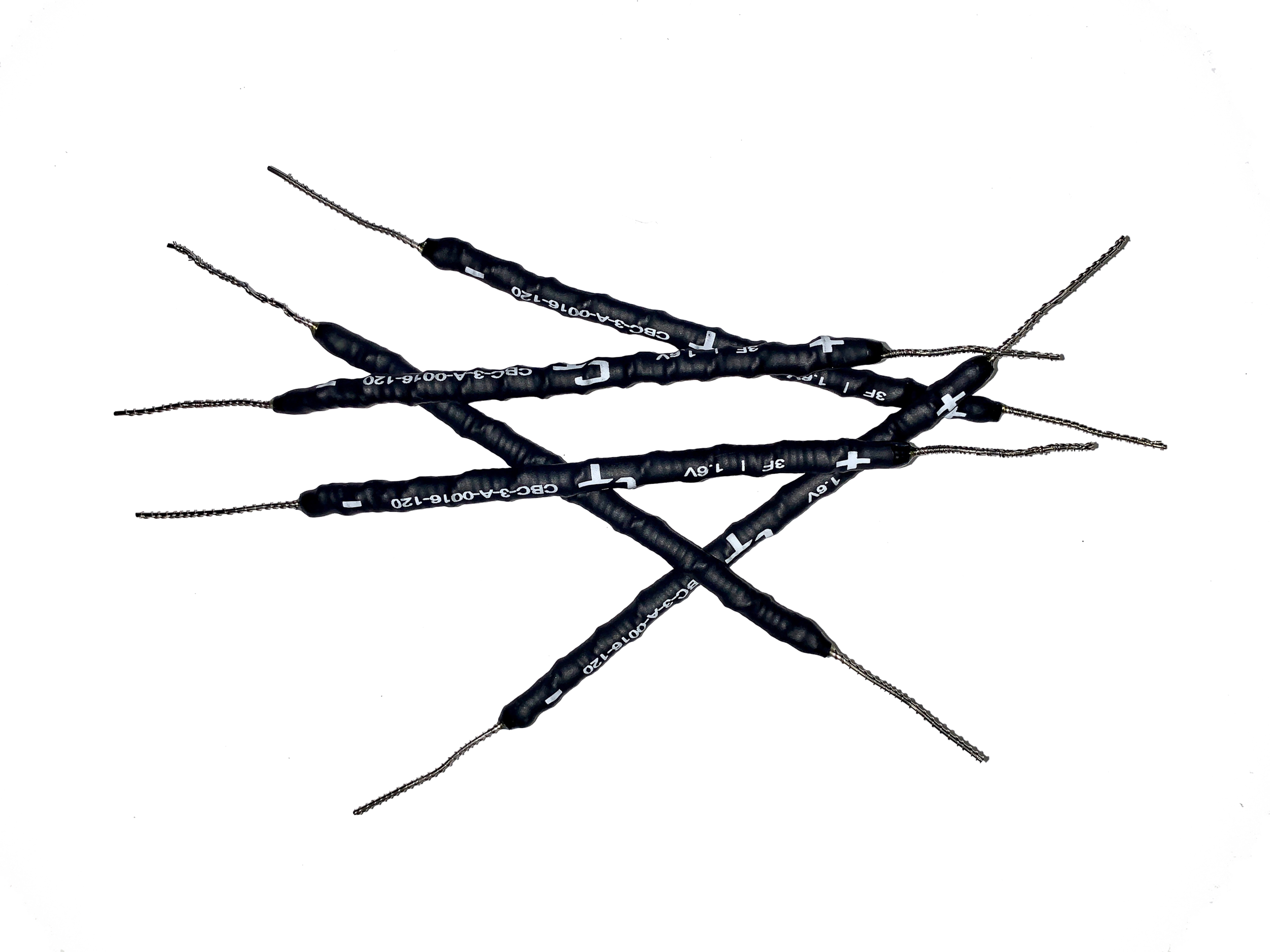Shaping the Future & Leaving Traditional Supercapacitors Behind
It is an exciting time to be alive thanks to the pace and scope of technological innovation. Computers, cameras and even cars continue to become twice as powerful about every two years. As a result, semiconductor technology is changing so rapidly that a new world is created every decade.
Unfortunately, a limitation on more rapid progress has been the lack of innovation in energy storage technologies, such as batteries and supercapacitors. These areas have lagged woefully behind the breathtaking rate of change elsewhere.
Until now.
Energy Storage Beyond Two Dimensions
Capacitors have clung unimaginatively to the form they’ve had for more than 250 years. Traditional capacitors are cylinders or rectangles that are installed on two-dimensional circuit boards. They are inflexible, use space inefficiently, and can be an impediment to innovation.
In contrast to the world’s relentless trend of miniaturization — most electronics have components that are smaller than a mustard seed — traditional capacitors are bulky. In fact, power dense supercapacitors are gigantic.
Supercapacitors are often the largest electronic component (especially compared to other passive components) on the circuit board. Supercapacitors, also known as Electric Double Layer Capacitors and UltraCapacitors, consume 10% and 50% of the real estate (area) of the circuit board.
This total mismatch of scale, miniature vs. massive, has led to clumsy design tradeoffs in size and performance.
What engineers need are supercapacitors that are as flexible as a wire, allowing for energy storage in unexpected places — such as inside of wiring harnesses, power cords, and wearables.
Capacitech Energy is a high-tech energy storage company that is freeing supercapacitor technologies from their restriction to two-dimensional circuit boards. Capacitech is reimagining energy storage systems by innovating the shape that energy storage products, like supercapacitors, come in.
Shape-Shifting Supercapacitors
Capacitech’s Cable-Based Capacitor (CBC) is a radically new, flexible, and wire-like supercapacitor optimized for space to miniaturize electronics and complement batteries.
The Cable-Based Capacitor is a flexible supercapacitor with 3F of capacitance. Its high capacitance and low ESR makes it a great complement for batteries.
Many circuits have a working voltage above that of a single supercapacitor, typically 2.7 volts. This requires supercapacitors to be stacked into a bank, which takes up significant space in the system or on the circuit board. This is the case for most high-value supercapacitor applications, like renewables and electric vehicles. In these kinds of applications, a lot of supercapacitors are required, which leads to negative engineering tradeoffs like:
Increasing bulk
Removing features
Sacrificing performance
Capacitech’s innovative CBC leverages its physically flexible form factor to eliminate the need to make these painful tradeoffs. This is because, like no supercapacitor before it, the CBC can be routed through areas where space is available on the circuit board or placed off the circuit board and integrated into other parts of the product or system’s infrastructure instead.
The Future Is Flexible & Seamlessly Integrated
Supercapacitors are critical to the mainstream adoption of a variety of technologies such as those emerging in the Cleantech and Internet of Things (IoT) space. While the value added by supercapacitors is known and well documented, finding the physical space to add supercapacitors is another challenge to be overcome with form factor innovations. With the CBC, designers can build a discrete and distributed network of supercapacitors to help miniaturize electronics and complement batteries; whether that is integrating supercapacitors into the leads of an indoor solar cell for an Internet of Things application, the wiring harness of an electric vehicle, or the photovoltaic wiring of a solar farm.
The CBC can conform to various shapes and can be repetitively bent without degrading its performance.
The CBC technology’s high-power density complements energy harvesting technologies and batteries, while offering unparalleled design flexibility and new placement options. Capacitech’s CBC is well positioned to integrate supercapacitors into the world’s infrastructure.
Capacitech Energy is building a flexible future with its shape-shifting products helping engineers design the next generation of wearables, solar power systems, SmartCity electronics, electric vehicles and more. Learn more about how Capacitech’s Cable-Based Capacitors will improve your next design.







